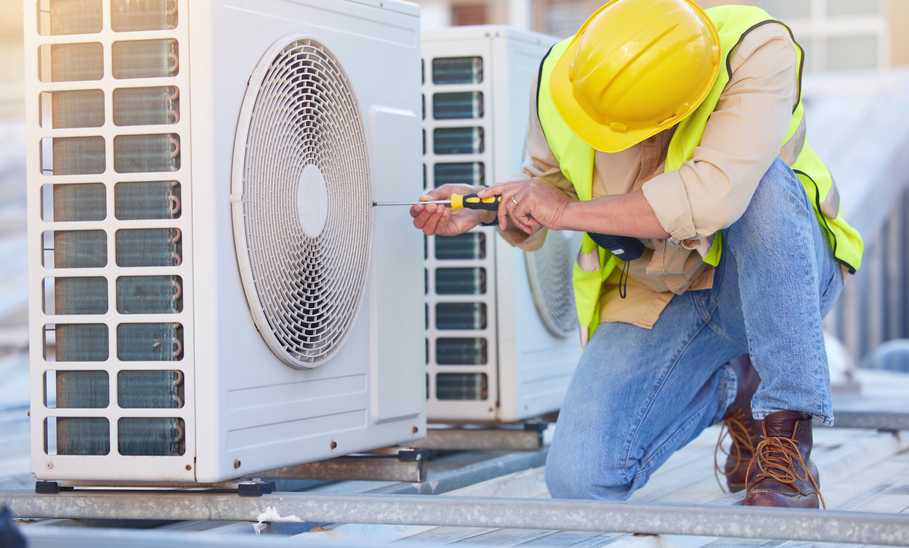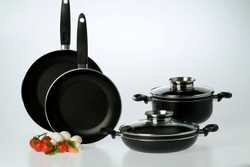What is HVAC and How Does an HVAC System Work?


Our evaluations and opinions are not influenced by our advertising relationships, but we may earn a commission from our partners’ links. This content is created by TIME Stamped, under TIME’s direction and produced in accordance with TIME’s editorial guidelines and overseen by TIME’s editorial staff. Learn more about it.
Most indoor spaces provide regulated ambient temperature via some kind of heating, ventilation, and/or air conditioning system. The rising overall temperature of the earth and more extreme seasonal climate events mean many of us use our home HVAC systems more often. We use them to cool or heat the air, lower humidity, filter out particles and allergens, and make our houses overall more comfortable. “An HVAC system is the heart and lungs of your home”, says Tim David, CEO at Airlucent.com.
HVAC stands for heating, ventilation, and air conditioning. An HVAC system regulates and maintains the ambient temperature in your space keeping it at your desired level whether that’s 73 or 65 degrees Fahrenheit.
“An HVAC system regulates the air circulating through spaces including buildings, offices, and your home,” explains Melanie Powers, president at Goodberlet Home Services.
They also improve indoor air quality by filtering allergens out of the air and removing humidity. Braden Cook, senior director of product management, training, and service at Carrier says, “The system consists of three basic elements: a source of warm or cool air, a method of sending the heated or cooled air into your living space, and a way to control the overall temperature in your home.”
Common components in an HVAC system include the AC (air conditioning) unit, thermostat, heat pump, furnace, air handler, and ductwork. Together they work to create a comfortable environment.
“The thermostat is like the nucleus, signaling to the other parts of the system when to heat or cool the area,” explains Powers. Newer HVAC systems may be equipped with smart thermostats that learn your habits, zoned systems that allow you to control different areas independently, and ultra-efficient units that can cut energy use in half compared to older models.
Depending on its age, your HVAC system’s heating source could be a furnace, boiler, or heat pump. Boilers convert your fuel source (coal, oil, gas, electricity, etc.) into hot water or steam that’s then pushed through pipes and into radiators. The NYC pre-war building I live in uses a boiler as well as a newly installed heat pump.
A furnace transforms your fuel source into hot air that circulates throughout your home, and a heat pump extracts heat from the water, ground, or air.
Air handlers, says David, provide a crucial, often overlooked element of an HVAC system: ventilation. “Good ventilation prevents mold, removes odors, and helps control humidity,” he says. “I once solved a persistent mold problem in a basement just by improving the ventilation.”
David describes an HVAC system’s ductwork as the “veins of your house, carrying air to where it's needed.” Things like air filters, humidifiers, and dehumidifiers fine-tune the air quality.
But an HVAC system is more than just these individual components David tells me. It's how they work together that matters. He thinks of it like an orchestra; each part plays its role, but they need to work in harmony.
Cook says there are two primary HVAC system types: ducted, sometimes called central air, and ductless. “While both types of systems operate on the same principals for cooling the air inside, they differ quite a bit in terms of installation, setup, and the delivery of cooled air,” he says.
The gold standard for air conditioning an entire home is generally a ducted central air conditioner or HVAC system. These, as the name indicates, use ductwork, typically installed within the walls, attic, and/or in between floors to deliver heated or cooled air throughout your house. They contain a central intake air handler with a filter.
Ducted central air systems are split systems. “They have an outdoor unit — the condenser — and an indoor unit — the air handler. They're great for most homes because they're efficient and can be tailored to your needs,” says David.
Ductless mini-split systems, as expected, do not use ducting to carry air. While they can be used for whole-home cooling, Cooks says these tend to be a better choice for a converted space, room addition, or for adding air conditioning to an older home that does not have ductwork for forced air cooling.
Some older apartment buildings in New York City install ductless split systems for each apartment though this can incur a pretty hefty initial cost (partially due to the required city permits). My building (a co-op) is considering this for the future so we don’t have to rely on window air conditioning units. In this situation, one part of the split system is installed on the roof while the other part is installed in the apartment. Many hotel rooms have mini split systems since they allow each guest to control the temperature individually.
As well as the standard split systems and the mini splits described above, another option is packaged systems where everything is housed in one unit, usually on the roof or next to the building. David recommends these for smaller commercial buildings or homes with limited indoor space. “I installed one for a local diner last year, and the owner loves how it frees up space inside for more tables,” he says.
Then there are geothermal systems which David calls the “Cadillac of HVAC.” These use the earth’s constant temperature to heat and cool your home. While comparatively pricey upfront, he says they offer the most efficient way to regulate the temperature in your home.
Hybrid systems combine a heat pump with a furnace or a boiler. They're great for places with varying seasons, says David, as they “switch between electric and gas power depending on which is more efficient at the time.”
As detailed above, a heating, ventilation, and air conditioning system consists of three basic elements. These include “a source of warm or cool air, a method of sending the heated or cooled air into your living space, and a way to control the temperature in your home,” explains Cook.
The thermostat recognizes when the temperature is too hot or too cold and turns the system on and off to maintain your preferred temperature. A furnace, air conditioner, or heat pump will take in existing air from inside your home, heat or cool it, then push that air back into your living space.
Cook says choosing the right HVAC system involves evaluating several critical factors tailored to your needs.
First, think about your climate and regional conditions. “For example,” Cook says, “if you live in the hot, humid South, you’ll likely need a robust air conditioning system, whereas residents in colder Northern regions might prioritize efficient heating solutions.” A combined heating and cooling system is the most practical option in many parts of the country.
Energy efficiency is also a major consideration, especially if you’re looking to reduce your heating and cooling bills in a climate where the system will operate frequently. Cook recommends looking for air conditioners and heat pumps with high SEER2 ratings and furnaces with high annual fuel utilization efficiency (AFUE) ratings.
“Higher numbers mean better efficiency,” says David. "Pay a little more now, save a lot more later.” But, he says, be upfront about what you can afford. In his experience, there’s usually a sweet spot between cost and efficiency. For instance, for a recent client, he was able to find a slightly older model with excellent energy efficiency at a more affordable price than a current model. It’s just like buying last year’s car model as opposed to the current year's.
“Proper sizing is also crucial,” says Cook as “undersized units will struggle to maintain comfort, and oversized units can lead to inefficient operation and higher costs.”
Consider any other features you need in an HVAC system, like humidity control. In regions with significant humidity fluctuations, Cook suggests a variable-speed system since they can be effective in maintaining consistent temperatures and controlling moisture levels. This type of system, he explains, “adjusts the output to match the precise heating or cooling needs, providing enhanced comfort and efficiency.”
David likes to ask clients about their five-year plan; whether they plan to stay in their home long-term or add an extension. “The right system can make a world of difference in your comfort and energy bills,” he says. “I've seen utility bills cut in half after installing the right system. It's not just about cooling or heating — it's about creating a comfortable, efficient home environment.”
If possible, schedule an appointment with a local dealer if you’re in the market for a new HVAC system. “They can conduct a thorough assessment of your home, help you navigate options, and provide professional advice tailored to your specific requirements,” says Cook. All of this ensures you’re able to make an informed decision.
An AC cools the air, removes humidity, and provides filtration. ACs don’t typically have heat settings. The term ACV encompasses central units, split systems, and window air conditioners. An HVAC system includes heat and cooling and usually provides more ventilation than a simple AC.
Cook says typical repairs and maintenance calls often revolve around the following:
• Electrical issues like blown fuses or tripped circuit breakers • A malfunctioning thermostat • Clogged air filters that impede airflow through your air ducts • Checking refrigerant levels and checking for leaks • Inspecting and cleaning components such as blower, blower motor, and condenser coils • Checking for leaks in the ductwork
While you can check your system yourself for clogged air filters and ductwork, consider having a professional perform service annually on your unit. More detailed instructions and advice on how to clean an air conditioner can be found here.
The company that installed your HVAC system will likely offer this where they’ll check your refrigerant levels and ensure there are no leaks. Having previously lived in Houston, Texas for quite a few years, I can attest that an unexpected HVAC system failure is never a good thing and, inevitably, it always seems to happen during a heat wave.
The information presented here is created by TIME Stamped and overseen by TIME editorial staff. To learn more, see our About Us page.



